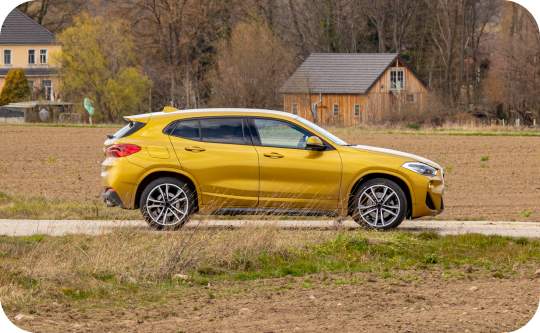Driverless cars - Myth or Reality
Imagine not having to allow an extra half hour in case the traffic is bad, because your car already knows the traffic conditions and has adjusted your departure time accordingly. Imagine catching up on last night's episode of The Bachelor or replying to emails on the way to work while your car navigates its way to the office, adjusting its speed to avoid accidents and catch all the green lights.
So how far away are we from this science-fictionesque reality?
Not so fast. While the technology for driverless cars is here, there are a lot of bumps in the road ahead.
The biggest one is how to make driverless cars safe. An Uber driverless car fatality in March last year has certainly done nothing for people's confidence. Another obstacle facing us is that driverless vehicles in Australia are reliant on foreign technology development to be realised. Then there's the issue of regulation. Who's at fault if there's a car accident or a fatality?
Despite these hurdles, Executive Director of the Australia and New Zealand Driverless Vehicle Initiative (ADVI), Rita Excell is optimistic that it won't be long before driverless vehicles hit our roads.
"Within the next five to 10 years we can expect to see the transition to driverless vehicles," Ms Excell told loans.com.au.
"As one of only a handful of countries pioneering on-road driverless vehicle research, Australia can become a global leader in the development and deployment of driverless vehicle technologies."
So where are we at now?
While fully autonomous vehicles aren't operating on the roads yet (except for testing purposes) assisted driving technologies are already here. These include "lane-keep assist", automatic braking and self-parking, to name just a few. Even though these features assist with driving, a human driver with a driver's license must still be in control of the vehicle at all times.
However, Ms Excell said even this restriction was likely to be lifted in some situations within ten years.
"Over the next decade, it is safe to assume that vehicles will become increasingly automated, to the point where a human will not need to drive at all in some locations or on regional highways, and a vehicle may not even have a steering wheel," Ms Excell said.

Pictured: Rita Excell. Image supplied.
"As far as driverless technologies already in use across Australia, the mining industry has been using driverless trucks for a number of years, with the number of autonomous trucks in the Western Australian iron ore mining industry having reached more than 240 and still climbing."
Comprehensive testing of driverless vehicles is still required to ensure they are safe and not disruptive before they can be deployed on public roads.
Ms Excell said that trials of automated vehicles had been underway in Australia since 2015 and Australia's first on-demand driverless car 'Intellicar' was already being trialled in Perth.
"Perth is only one of a limited number worldwide to be selected to trial the deployment of a robo-taxi as one of the world's first driverless, on-demand vehicles," Ms Excell said.
"There are two more on-demand driverless cars being trialled in Adelaide."
Road operator Transurban is also trialling automated vehicles in Queensland, Victoria and New South Wales to see how the vehicles respond to road markings and signs. The second phase of these trials will examine what digital infrastructure is needed (e.g. wireless communications to receive data from speed limit signs).
Levels of automated driving
Level 1
Driver assistance: Available now. This has been on the market here for a few years now (cruise control).
People are still in control of the vehicle and the car can sense hands on the wheel, so the driver can't be doing anything else.
Level 2
Partial automation: Available now. For example, automatic braking, lane-keep assist, self-parking. The car can accelerate, brake and steer, but there still needs a person to be in the driver's seat in control of the vehicle.
Level 3
Conditional automation: Not available yet. People can switch off from the task of driving and do something else like read a book. But they must take back control of the vehicle if requested by the system. Legislative reform is needed before this can be rolled out.
Level 4
Highly automated: Not available yet but expected soon. This is similar to level 3 but people aren't required to be the fallback for driving. Vehicles may be self-driving but restricted on where they can go. Expected by 2020 but rollouts may be restricted.
Level 5
Full automation: Not available yet and not expected within a decade. Cars that are completely automated 100% of the time, can go anywhere and drive in all weather conditions. At least a decade away.
How does the technology work?
Self-driving cars need to obey road rules, respond quickly to unexpected situations, and drive safely. They do this with built-in systems like GPS, sensors, detection technology and onboard computers that analyse the car's surroundings and automatically take the right action.
You know all those annoying reCaptcha tests where you have to select the images that have street signs/buses/traffic lights in them?

Turns out we've been unknowingly teaching driverless cars how to drive all this time. Google has a history of using humans to verify and improve their Optical Character Recognition (OCR) of artificial intelligence. So applying the same resources to verify and improve their image processing, machine learning and artificial intelligence (AI) algorithms isn't out of the question as autonomous driving is all about AI.
Driverless cars are supposed to make our roads safer and reduce congestion. But driverless cars can't control the mistakes made by human drivers around them, so the algorithms driving them could also be forced to make the same split second life-or-death decisions humans face behind the wheel.
Under ethical guidelines drawn up by Germany, the software that controls driverless cars must be programmed to avoid injury or death of people at all costs. This means when an accident is unavoidable, the algorithm must choose the action which will hurt people the least - even if it means killing the driver to avoid killing a child crossing the road.
Of course, this raises a huge ethical dilemma: while we're already forced to make split second decisions on the road, should a car be programmed to make those decisions for us?
According to iMOVE CRC, a consortium of science and industry designed to bring driverless technology to the market, driverless cars will be programmed with a "relative negative consequence" of impact and will always choose the "least bad" option.
What are the laws with driverless cars?
When a car is essentially driving itself, who's held responsible for accidents? Is it the car's fault or the programmers?
Henry Silvester, Principal at Barry.Nilsson. Lawyers said criminal responsibility hasn't been explored in Australia yet.
"We do not have laws for the general public in Australia yet for autonomous vehicles," Mr Silvester told loans.com.au.
"The laws may follow the UK or Germany in which case the vehicle should have a ‘black box’ from which data can be retrieved after an accident to determine whether the autonomous function or the human was operating the vehicle."
Mr Silvester said that under proposed changes to Compulsory Third Party (CTP) insurance laws, injured people would most likely seek compensation from the CTP insurer of the vehicle that caused the injury much the same as they do now.
He said it was certainly possible traffic codes would need to be rewritten to accommodate self-driving cars.
"That will depend on how they (the cars) are introduced," Mr Silvester said.
"For example, if they are provided with a designated lane like buses."
What could driverless cars be used for?
Besides ferrying the average Joe around, there's the fear that driverless cars will render some jobs obsolete, such as driving instructors, truck drivers, public transport workers, etc.
But Ms Excell told loans.com.au the affected industries will have to adjust as they have in the past by retraining workers to take on new roles.
"Just as we have seen quite mainstream jobs transition over the course of time – such as blacksmiths, milkmen, elevator and switchboard operators – the introduction of driverless vehicles will create jobs that haven’t even been considered yet," Ms Excell said.
"Even travelling in a driverless vehicle will create a range of new roles, because someone will need to develop new forms of digital entertainment and the full range of mobile business facilities expected by consumers."
Ms Excell said that any job losses within the traditional transportation sector would be offset by jobs created across the engineering, automotive, electrical and software industry sectors, which would increasingly be called on to service and support the driverless vehicle industry.
When can I buy a driverless car?
Cars with autonomous driving modes are already available and could be legally usable in some locations, such as country highways and freeways, within 10 years.
If you don't want to wait that long, you can always buy an environmentally-friendly green car today. You can bring costs down by funding your purchase with one of our unique green car loans which offers a 0.7% interest rate discount for purchasing a qualifying low-emissions vehicle.
Find out in under 2 minutes if you qualify for one of our low rate car loans.

Other helpful resources:
About the article
As Australia's leading online lender, loans.com.au has been helping people into their dream homes and cars for more than 10 years. Our content is written and reviewed by experienced financial experts. The information we provide is general in nature and does not take into account your personal objectives or needs. If you'd like to chat to one of our lending specialists about a home or car loan, contact us on Live Chat or by calling 13 10 90.


















